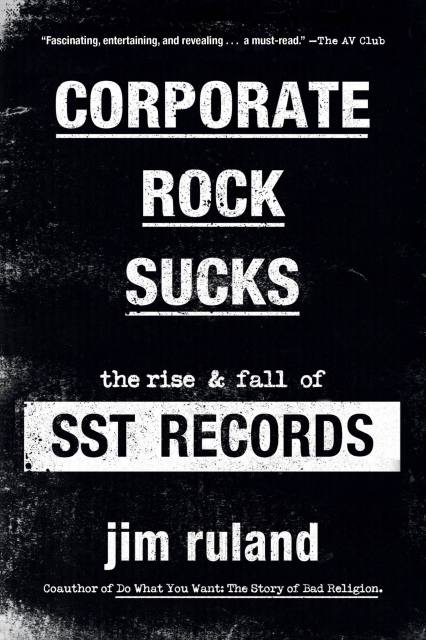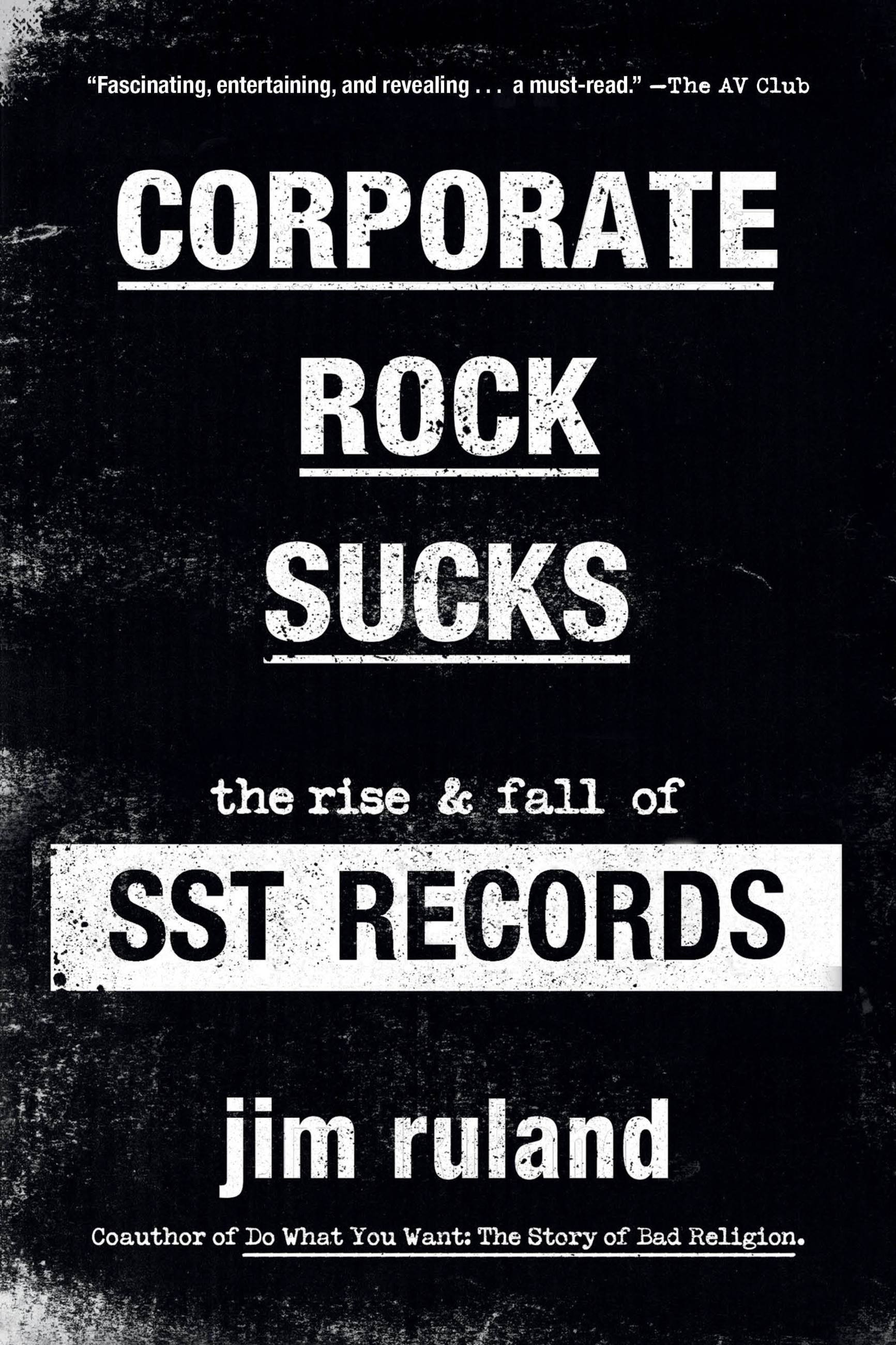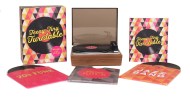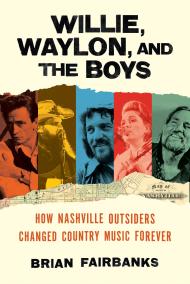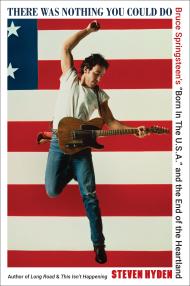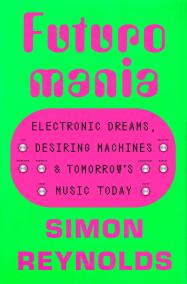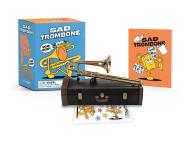Corporate Rock Sucks
The Rise and Fall of SST Records
Contributors
By Jim Ruland
Formats and Prices
Price
$21.99Price
$28.99 CADFormat
Format:
- Trade Paperback $21.99 $28.99 CAD
- ebook $14.99 $19.99 CAD
- Hardcover $30.00 $38.00 CAD
- Audiobook Download (Unabridged) $31.99
This item is a preorder. Your payment method will be charged immediately, and the product is expected to ship on or around June 6, 2023. This date is subject to change due to shipping delays beyond our control.
Also available from:
A no-holds-barred narrative history of the iconic label that brought the world Black Flag, Hüsker Dü, Sonic Youth, Soundgarden, and more, by the co-author of Do What You Want and My Damage.
Greg Ginn started SST Records in the sleepy beach town of Hermosa Beach, CA, to supply ham radio enthusiasts with tuners and transmitters. But when Ginn wanted to launch his band, Black Flag, no one was willing to take them on. Determined to bring his music to the masses, Ginn turned SST into a record label. On the back of Black Flag’s relentless touring, guerilla marketing, and refusal to back down, SST became the sound of the underground.
In Corporate Rock Sucks, music journalist Jim Ruland relays the unvarnished story of SST Records, from its remarkable rise in notoriety to its infamous downfall. With records by Black Flag, Minutemen, Hüsker Dü, Bad Brains, Sonic Youth, Dinosaur Jr, Screaming Trees, Soundgarden, and scores of obscure yet influential bands, SST was the most popular indie label by the mid-80s–until a tsunami of legal jeopardy, financial peril, and dysfunctional management brought the empire tumbling down. Throughout this investigative deep-dive, Ruland leads readers through SST’s tumultuous history and epic catalog.
Featuring never-before-seen interviews with the label's former employees, as well as musicians, managers, producers, photographers, video directors, and label heads, Corporate Rock Sucks presents a definitive narrative history of the ’80s punk and alternative rock scenes, and shows how the music industry was changed forever.
-
**Pitchfork, "Best Music Books of 2022"**
**Rolling Stone, "Best Music Books of 2022"**
**LOUDER, "Best Music Books from 2022"** -
“Jim Ruland tells the whole messy saga [of SST Records] in his un-put-downable CORPORATE ROCK SUCKS.”Rolling Stone
-
“A go-to resource for punk archivists looking beyond the impact of Damaged or Double Nickels on the Dime.”Pitchfork
-
"The DIY label's messy history... is quite a tale, and its related here in unflinching detail, making Corporate Rock Sucks as much an autopsy as a celebration of defiant 'fuck you' punk rock ethics... Corporate Rock Sucks should inspire a new generation of outliers to seek out some of the most thrillingly uninhibited art to emerge from the punk rock underground."LOUDER
-
“[A] fascinating history... [Ruland] offers a most impressive work that brings together the various artists that were part of the SST galaxy, along with insightful views of the vast catalog produced by the label during its forty-year history.”Seattle Book Review
-
“Take the most influential Southern California punk label from the 1980s, combine it with the master touch of music historian Jim Ruland, and you get this incredible historical narrative that is difficult to put down.”Greg Graffin of Bad Religion
-
“SST Records became a radiant supernova of creativity and possibility. A true and livable alternative to lame shit. And then, somehow, it fell apart when it was poised to create another universe. It became radioactive, a black hole. This book is that ‘somehow’—part archeology, part autopsy.”Todd Taylor, Razorcake
-
“‘Get in the van,’ to borrow a phrase from another Black Flag book you may have heard of, has become something of a cliche, but it's no less true for punk bands in 2022 than it was in 1981. No matter how talented you are or how good your songs, you still, at long last, have to put in the work. The same applies to writers. For Corporate Rock Sucks, it's clear Jim has logged thousands and thousands of miles, talking to seemingly everyone who ever even heard of SST, digging up old record reviews and interviews and photos and zines no one has probably looked at for decades. It all adds up to an informative and fun read on a highly influential, and highly dysfunctional, record label.”Luke O'Neil, author of Welcome to Hell World: Dispatches from the American Dystopia
-
“With Corporate Rock Sucks, Jim Ruland asserts his power as a leading chronicler of Southern California punk rock. His exhaustive research and incisive commentary form a detailed and dynamic work worthy of the gargantuan legacy of SST—one of America’s foremost independent record labels that gave rise to Black Flag, the Meat Puppets, Minutemen, Hüsker Dü, Sonic Youth, Dinosaur Jr., and many others. An essential read for those curious about the label’s serpentine path and pre-broadband DIY music culture.”Erin Osmon, author of Jason Molina: Riding with the Ghost and John Prine
-
“The improbable rise and slow-motion implosion of SST Records is legendary, but nobody has painted a complete picture of the dark saga until now. Ruland combines his personal knowledge of the SoCal punk scene, in-depth research, and interviews with key players to tell the whole sordid tale. Corporate Rock Sucks is a must-read for fans of ‘80s/‘90s hardcore, punk, and alternative rock.”S.W. Lauden, editor of Forbidden Beat: Perspectives on Punk Drumming
-
"When tracing the lineage of independent record labels in the American Punk scene during the 1980s, SST Records can definitely be cited as the vanguard to the whole shebang. With a history gnarled with legal issues, money issues, blown release dates, hard-living, and a devilish penchant for pushing against punk’s parameters, their tale is a tough one to wrangle, but Jim manages to cut through all the convolutions to deliver the straight dope on the influential imprint in a concise, informative and entertaining way."Tony Rettman, author of Straight Edge: A Clear-Headed Hardcore Punk History and NYHC: New York Hardcore 1980-1990.
-
“Fascinating, entertaining, and revealing… a must-read.”AV Club
- On Sale
- Jun 6, 2023
- Page Count
- 432 pages
- Publisher
- Hachette Books
- ISBN-13
- 9780306925498
Newsletter Signup
By clicking ‘Sign Up,’ I acknowledge that I have read and agree to Hachette Book Group’s Privacy Policy and Terms of Use
